Are your aquarium inhabitants looking lethargic or unwell? It could be a sign of an imbalanced pH level in your aquarium. Understanding what pH is, why it’s important to maintain the proper level, and how high pH can affect aquatic life is crucial to the health and well-being of your underwater ecosystem. So, let’s dive in and explore the world of pH in aquariums!
What is pH And Why Is It Important to Maintain It In An Aquarium?
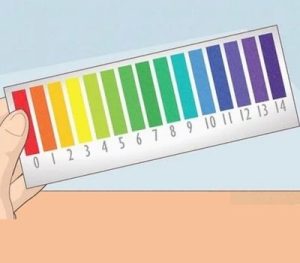
In simple terms, PH is a measure of the acidity or alkalinity of a solution, on a scale of 0 to 14. Maintaining a proper pH level in an aquarium is crucial for the health and well-being of aquatic life. Different fish species and aquatic plants thrive in different pH ranges, so it is important to maintain the appropriate pH level for the inhabitants of the aquarium. A pH level that is too high or too low can cause stress, illness, and even death in fish and other aquatic creatures.
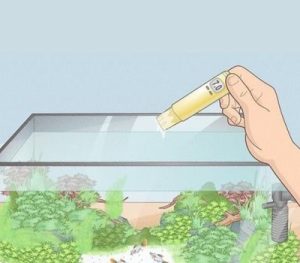
When the pH level in an aquarium is too high, it can lead to several problems. High pH can cause an increase in ammonia and nitrite levels, which are toxic to fish. It can also lead to decreased oxygen levels, which can cause stress and illness in fish. Additionally, high pH levels can interfere with the effectiveness of certain medications and treatments, making it harder to keep fish healthy.
What’s The Ideal pH Range for Different Types of Fish and Aquatic Plants?
Different types of fish and aquatic plants have different pH requirements. For example, most freshwater fish prefer a pH range of 6.5 to 7.5, while some South American cichlids thrive in a more acidic pH range of 5.5 to 6.5.
Similarly, some aquatic plants prefer slightly acidic water, while others prefer alkaline water. It is important to research the specific needs of the fish and plants in your aquarium to determine the ideal pH range.
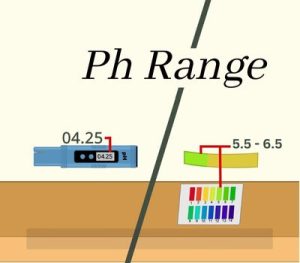
Disclosure: This article contains affiliate links. When you follow a link to purchase the products, I sometimes earn a commission, at no additional cost to you. Read my full disclosure here.
Factors that Affect PH Level in Aquariums
There are several factors can affect the pH level in aquariums, including:
- The type of substrate used: The substrate used in an aquarium can impact pH levels. For example, substrates made of crushed coral or limestone can raise the pH levels, while substrates made of peat moss or coconut fiber can lower the pH levels.

- The type of rocks and driftwood present: Some types of rocks and driftwood can release minerals and chemicals that can alter the pH levels in an aquarium. For example, rocks containing limestone or shells can increase pH levels, while driftwood can lower pH levels.
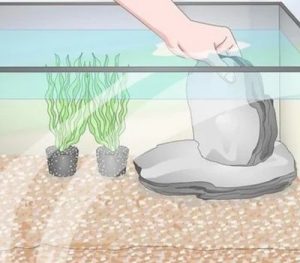
- The presence of aquatic plants: Aquatic plants can influence pH levels by absorbing carbon dioxide during photosynthesis, which can raise pH levels. However, some plants can also release organic acids that can lower pH levels.
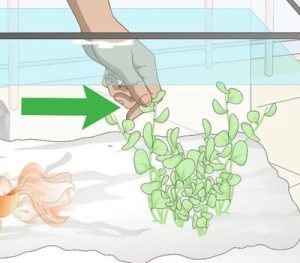
- The presence of fish and other aquatic life: Fish and other aquatic life can produce waste that can increase the acidity of the water and lower pH levels. Additionally, the respiration of fish can release carbon dioxide, which can also lower pH levels.
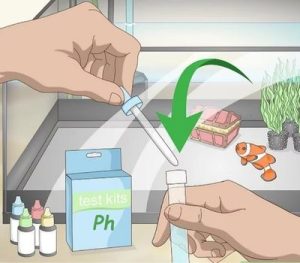
- The hardness and mineral content of the water: The hardness and mineral content of the water can impact pH levels. Hard water with a high mineral content can have a higher pH, while soft water with a low mineral content can have a lower pH.
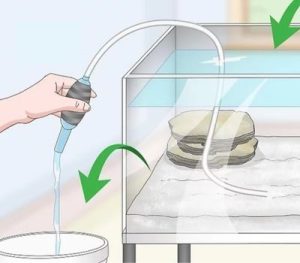
- The use of filtration systems and additives: Filtration systems and additives can impact pH levels. For example, some filtration systems can remove minerals and lower pH levels, while some additives can raise pH levels.
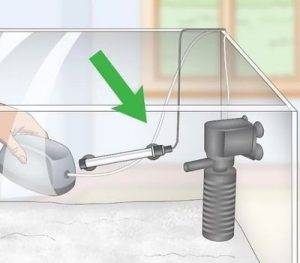
Methods for Lowering PH In An Aquarium
When the pH level in an aquarium is too high, there are several methods that can be used to lower it. Those methods are mentioned below.
- Using Peat Moss or Almond Leaves
Peat moss or almond leaves can be added to the aquarium water to lower the pH level naturally. These natural substances release tannic acids that can help lower the pH level. However, it’s important to note that the amount required to lower the pH level can be difficult to measure, and the effects can be temporary.
- Adding Commercial pH Lowering Solutions
Commercial pH lowering solutions can be added to the aquarium water to lower the pH level. These solutions are available in liquid or powder form and can be added to the water directly. It’s important to follow the instructions on the product carefully, as adding too much can lead to drastic changes in pH level and harm aquatic life.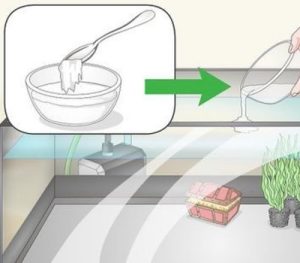
- CO2 Injection
Injecting carbon dioxide (CO2) into the aquarium water can lower the pH level. This method is commonly used in planted aquariums where the CO2 is used by aquatic plants during photosynthesis, and in turn, lowers the pH level. However, CO2 injection can be expensive and requires regular monitoring to avoid excessive changes in pH level.
- Reverse Osmosis or Distilled Water
Reverse osmosis or distilled water can be used to lower the pH level in an aquarium. These methods remove minerals from the water that can cause high pH levels. However, it’s important to note that this method can also remove essential minerals that are required by fish and plants, so it should be used with caution.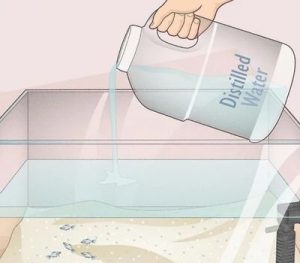
- Use of Aquarium Driftwood or Rocks
Certain types of aquarium driftwood or rocks can help lower the pH level in an aquarium naturally. These substances release tannins that can help lower pH levels. However, it’s essential to research the specific type of driftwood or rock to ensure it is safe for aquatic life.
- Partial Water Changes
Performing regular partial water changes can help reduce the pH level in a fish tank. By replacing a portion of the aquarium water with fresh water that has a lower pH level, you can gradually lower the overall pH level in the tank.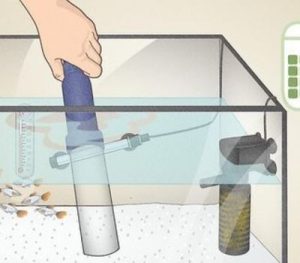
- Acidic Substances
Adding acidic substances, such as vinegar or citric acid, can help lower the pH level in a fish tank.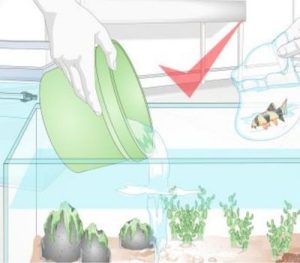
- Aquarium Water Conditioners
Certain aquarium water conditioners can help lower the pH level in a fish tank. These conditioners contain chemicals that can neutralize alkaline substances and lower the pH level.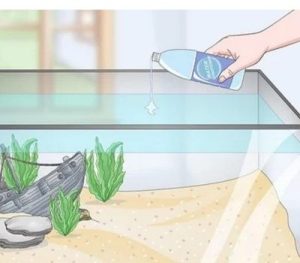
Step-by-Step Guide To Lower pH In An Aquarium
Lowering the pH level in an aquarium requires careful monitoring and gradual adjustments to avoid stress on the fish and other aquatic life. Here is a step-by-step guide to help you lower the pH level in your aquarium:
Step 1: Testing and Monitoring PH Level
Before you start, it’s important to test and monitor the pH level in your aquarium regularly. Use an aquarium pH test kit to determine the current pH level, and record the results. This will help you track the progress and ensure that the pH level is being lowered gradually and safely.
Step 2: Choosing the Best Method
Choose the best method to lower the pH level based on the type of fish and plants in your aquarium. Consider the factors that affect pH level, and research the different methods to determine which one is most suitable for your aquarium.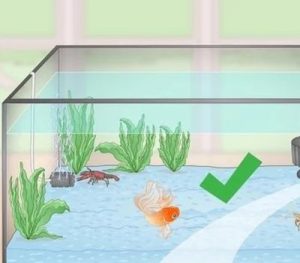
Step 3: Implementation of Chosen Method
Once you have selected the method, implement it slowly and gradually to avoid sudden changes in the pH level that can harm the aquatic life in the aquarium. Follow the instructions carefully and make small adjustments over time.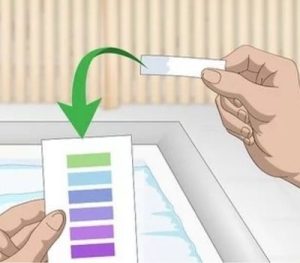
Step 4: Adjusting PH Slowly and Gradually
Adjust the pH level slowly and gradually, checking the pH level frequently to ensure that it’s moving in the right direction. If you notice any sudden changes, adjust the method accordingly or seek professional advice.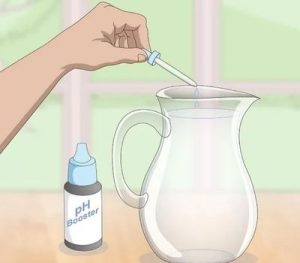
Step 5: Monitor the Fish and Plants
Monitor the fish and plants closely during the process of lowering the pH level. Watch for any signs of stress or illness, such as lethargy or loss of appetite. If you notice any such signs, stop the process immediately and seek professional advice.
Concluding Note: Precaution & Tips For Lowering pH in Your Aquarium
Maintaining the proper pH level in an aquarium is essential for the health and well-being of fish and aquatic plants. Here are some precautions and tips to keep in mind when lowering the pH level in your aquarium:
- Importance of Regular Water Changes
Performing regular water changes is important to maintain the health of the aquatic life in your aquarium. This helps to remove waste, excess nutrients, and other contaminants that can affect the pH level and overall water quality. - Avoiding Sudden PH Fluctuations
Sudden changes in pH levels can be harmful to the fish and other aquatic life in the aquarium. It’s important to make changes gradually and monitor the pH level closely. Avoid adding too much of any substance at once, and make small, gradual adjustments over time. - Ensuring Proper Aeration and Filtration
Proper aeration and filtration are essential for maintaining a healthy environment in the aquarium. This helps to oxygenate the water and remove waste, excess nutrients, and other contaminants that can affect the pH level and overall water quality. - Proper Care and Maintenance of Equipment Used for PH Adjustment
Equipment used for pH adjustments, such as filters and air pumps, should be properly maintained to ensure that they are functioning correctly. This helps to prevent any malfunctions or issues that can affect the pH level and overall water quality. - Monitoring the Fish and Plants
It’s important to monitor the fish and plants closely during the process of lowering the pH level. Watch for any signs of stress or illness, such as lethargy or loss of appetite. If you notice any such signs, stop the process immediately and seek professional advice.



